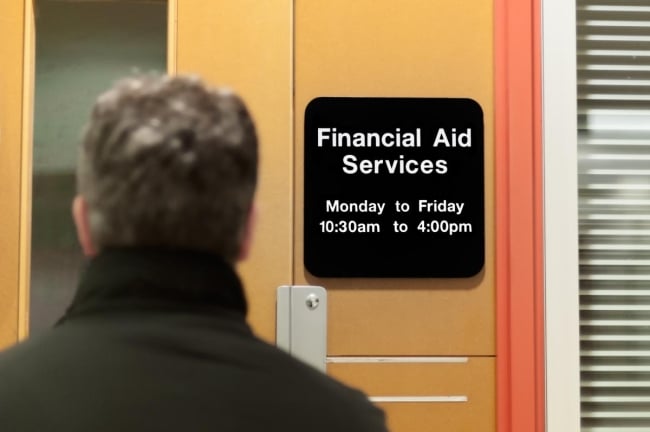You have /5 articles left.
Sign up for a free account or log in.

PamelaJoeMcFarlane/Getty Images
Increasing staffing shortages at college financial aid offices have been a point of concern throughout the pandemic. According to a recent survey, reduced capacity, high turnover rates and difficulty hiring over the past two years have institutions worried about long-term impacts, including the ability to meet federally mandated staffing requirements.
According to a recent survey of 500 institutions released today by the National Association of Student Financial Aid Administrators, 80 percent of respondents indicated that they were concerned about their financial aid offices’ ability to remain “administratively capable” in the future to reach Education Department requirements for Title IV programs, plus Pell Grants, Supplemental Educational Opportunity Grants and federal student loans.
What’s more, 56 percent of respondents said they were concerned with their ability to meet the needs of students given their current staff levels.
“We are sounding the alarm bells that many financial aid offices are critically short-staffed, which could create cascading issues for those colleges and universities, both in their ability to adequately serve students while also remaining compliant with federal and state rules,” said NASFAA president Justin Draeger.
What Is Driving the Staff Shortages?
Retention and hiring issues at financial aid offices reflect larger trends across the global economy, driven by pandemic-induced inflation, job market changes and stagnant wages. In the financial aid sector, hiring and retention issues predated the pandemic and have become a primary concern as the demand for financial aid assistance from struggling students has increased due to the pandemic.
The NASFAA survey found that half of responding institutions with at least one vacancy were operating at 75 percent staffing capacity in the award years 2019–20 and 2020–21. This has led to a decrease in financial aid offices’ ability to service students’ basic financial assistance needs, such as providing information on available aid and loan repayment, as well as helping students in need of emergency financial aid.
“We’ve got our folks spread really thin. We don’t have enough people to answer the phones. We don’t have enough people to service the students through the virtual services, and we get more lines at our campuses,” said JoEllen Price, the executive director of financial aid at Houston Community College.
According to the NASFAA survey, 69 percent of full-time employees who left the sector did so to take a job with a higher salary or better benefits. As financial aid offices lose employees due to resignation and retirement, they are struggling to attract qualified employees, leading to shortages in staff.
Of those surveyed, 43 percent said that it was “very difficult” to fill vacant positions with qualified staff.
“In financial aid, you can’t replace someone that quickly. It usually takes a year or two for a financial aid counselor to really understand everything,” said Wayne Kruger, executive director of financial assistance operations at St. Petersburg College in Florida. “When a counselor retires that’s been there 30 years, you just don’t get somebody off the street to replace them.”
Not only are financial aid offices struggling to fill counselor positions, but they are also experiencing difficulty finding candidates to fill entry-level positions that are often used as stepping-stones to the higher-level counseling positions. According to Price, federal work-study positions in financial aid offices are often feeders that place former student staff in entry-level financial aid office positions. However, work-study participation has sharply declined since the pandemic.
“Prior to the pandemic, we had no problems hiring work-study students that could help us with our services to other students,” said Price. “But we’re having trouble finding students to work in these positions.”
Both Price and Kruger indicated that they have raised the wages of work-study positions in their offices in an effort to attract students. These attempts, however, have not spurred enough interest to fill the current demand.
Draeger said that institutions that are heavily dependent on enrollment are struggling the most to retain financial aid office staff, especially given decreases in revenue from enrollment declines throughout the pandemic. These include community colleges, open-access four-year colleges and some low-cost private institutions.
Federal Compliance
Although issues with staffing in higher education are not unique to financial aid offices, Draeger noted that it is important that these shortages be addressed, because they could potentially jeopardize an institution’s ability to remain in compliance with the administrative capability requirements outlined by the Education Department to qualify for Title IV programs, which include most student aid programs funded by the federal government.
Draeger defined administrative capability as the federal government saying “a school has to invest enough money and resources in its aid office so that they have enough staff to adequately administer the programs and that they are receiving enough money to be trained on an ongoing basis on changes in Title IV rules and regulations.”
If institutions fail to meet these administrative capability requirements, they could face financial penalties or lose their ability to qualify for federal funding under Title IX student aid programs.
The federal government has relaxed some of the administrative requirements that typically dictate Title IV eligibility since the start of the pandemic to allow financial aid offices to have more flexibility with staffing. However, the persistence of staffing shortages has made some in financial aid offices nervous, because once the federal government declares the pandemic is over, those requirements will be reinstated.
Only 61 percent of those surveyed felt they had the resources to remain in compliance with administrative capability requirements outlined by the Education Department.
According to Price, the Education Department has been transparent in saying that it will give financial aid offices until the end of the payment period after the end of the national emergency to come back into compliance. Price said that her office has been taking steps to prepare for these changes.
“We are doing a lot of cross-training right now to prepare staff in case we have to do more movement,” said Price. “It won’t be like a light switch going off where all of a sudden you have flexibility now and tomorrow you don’t. So at least they put some written concessions into the regulations that allow us to at least extend it and be ready and plan for it.”




